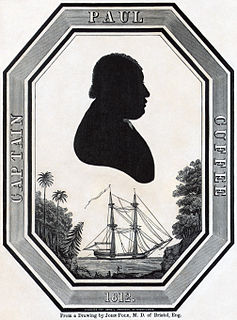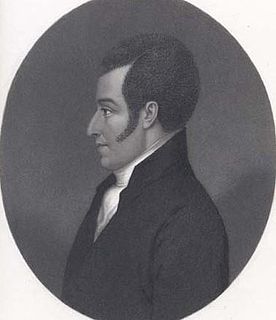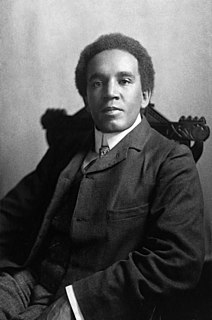Related Research Articles

Sierra Leone, officially the Republic of Sierra Leone, informally Salone, is a country on the southwest coast of West Africa. It is bordered by Liberia to the southeast and Guinea to the northeast. Sierra Leone has a tropical climate with a diverse environment ranging from savanna to rainforests, a total area of 71,740 km2 (27,699 sq mi) and a population of 7,092,113 as of the 2015 census. The capital and largest city is Freetown. The country is divided into five administrative regions which are subdivided into sixteen districts. Sierra Leone is a Constitutional Republic with a unicameral parliament, and a directly elected president.
Sierra Leone first became inhabited by indigenous African peoples at least 2,500 years ago.The Limba were the first tribe known to inhabit Sierra Leone. The dense tropical rainforest partially isolated the region from other West African cultures, and it became a refuge for peoples escaping violence and jihads. Sierra Leone was named by Portuguese explorer Pedro de Sintra, who mapped the region in 1462. The Freetown estuary provided a good natural harbour for ships to shelter and replenish drinking water, and gained more international attention as coastal and trans-Atlantic trade supplanted trans-Saharan trade.

Freetown is the capital and largest city of Sierra Leone. It is a major port city on the Atlantic Ocean and is located in the Western Area of the country. Freetown is Sierra Leone's major urban, economic, financial, cultural, educational and political centre, as it is the seat of the Government of Sierra Leone. The population of Freetown was 1,055,964 at the 2015 census.

James Pettit Andrews was an English historian and antiquary.

Paul Cuffe, also known as Paul Cuffee was an American businessman, whaler and abolitionist. Born free into a multiracial family on Cuttyhunk Island, Massachusetts, Cuffe became a successful merchant and sea captain. His mother, Ruth Moses, was a Wampanoag from Harwich, Cape Cod and his father an Ashanti captured as a child in West Africa and sold into slavery in Newport about 1720. In the mid-1740s, his father was manumitted by his Quaker owner, John Slocum. His parents married in 1747 in Dartmouth.
The Sierra Leone Company was the corporate body involved in founding the second British colony in Africa on 11 March 1792 through the resettlement of Black Loyalists who had initially been settled in Nova Scotia after the American Revolutionary War. The company came about because of the work of the ardent abolitionists, Granville Sharp, Thomas Clarkson, Henry Thornton, and Thomas's brother, John Clarkson, who is considered one of the founding fathers of Sierra Leone. The Company was the successor to the St. George Bay Company, a corporate body established in 1790 that re-established Granville Town in 1791 for the 60 remaining Old Settlers.
Andrew Arthur Gray is an English former footballer who played in the centre of midfield or as a striker during his career, before going into International management. He is a former coach of the Sierra Leone national football team.
Thomas Peters, born Thomas Potters, was a veteran of the Black Pioneers, fighting for the British in the American Revolutionary War. A Black Loyalist, he was resettled in Nova Scotia, where he became a politician and one of the "Founding Fathers" of the nation of Sierra Leone in West Africa. Peters was among a group of influential Black Canadians who pressed the Crown to fulfill its commitment for land grants in Nova Scotia. Later they recruited African-American settlers in Nova Scotia for the colonisation of Sierra Leone in the late eighteenth century.

The Committee for the Relief of the Black Poor was a charitable organisation founded London in 1786 to provide sustenance for distressed people of African and Asian origin. It played a crucial role in the proposal to form a colony for black refugees in Sierra Leone. The work of the Committee overlapped to some extent with the campaign to abolish slavery throughout the British Empire.
Richard Beale Blaize was a Nigerian-Sierra Leonean businessman, newspaper publisher, financier, and black nationalist of Sierra Leonean and Nigerian heritage.

David George was an African-American Baptist preacher and a Black Loyalist from the American South who escaped to British lines in Savannah, Georgia; later he accepted transport to Nova Scotia and land there. He eventually resettled in Freetown, Sierra Leone. With other slaves, George founded the Silver Bluff Baptist Church in South Carolina in 1775, the first black congregation in the present-day United States. He was later affiliated with the First African Baptist Church of Savannah, Georgia. After migration, he founded Baptist congregations in Nova Scotia and Freetown, Sierra Leone. George wrote an account of his life that is one of the most important early slave narratives.

Daniel Coker (1780–1846), born Isaac Wright, was an African American of mixed race from Baltimore, Maryland; after he gained freedom from slavery, he became a Methodist minister. He wrote one of the few pamphlets published in the South that protested against slavery and supported abolition. In 1816 he helped found the African Methodist Episcopal Church, the first independent black denomination in the United States, at its first national convention in Philadelphia.
Christopher Fyfe was a Scottish historian most noted for his work on Sierra Leone in West Africa.
Bamber Gascoyne of Childwall Hall, Lancashire, was an eighteenth-century British politician. He was an ancestor of two British Prime Ministers, Robert Gascoyne-Cecil, 3rd Marquess of Salisbury, and Arthur Balfour.

William Allen Vivour was the single most successful 19th-century planter in Africa due to his substantial and flourishing cocoa plantation in Fernando Po. He was the son of recaptive of Yoruba ancestry captured from what is now Lagos Nigeria, and resettled in Sierra Leone by the British West Africa Squadron, and eventual returnees to present day Equatorial Guinea and Nigeria.
William Gwinn was an African American from Boston, Massachusetts. He was one of the first black Americans to participate in the antebellum American Back-to-Africa movement under the auspices of Captain Paul Cuffe's 1815 voyage to Sierra Leone.
Henry Smeathman (1742–1786) was an English naturalist, best known for his work in entomology and colonial settlement in Sierra Leone.
Smeathmannia is a genus of Passifloraceae named after Henry Smeathman.

The Sierra Leone Creole people is an ethnic group in Sierra Leone. The Sierra Leone Creole people are descendants of freed African American, West Indian, and Liberated African slaves who settled in the Western Area of Sierra Leone between 1787 and about 1885. The colony was established by the British, supported by abolitionists, under the Sierra Leone Company as a place for freedmen. The settlers called their new settlement Freetown. Today, the Sierra Leone Creoles are 1.3% of the population of Sierra Leone.
The African-American diaspora refers to communities of people outside of the United States who are descended from people of African descent who were enslaved in the United States or the prior British colonies along the east coast of North America.